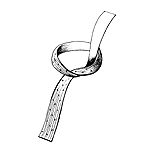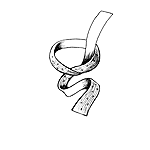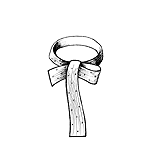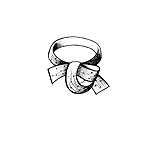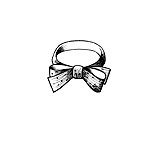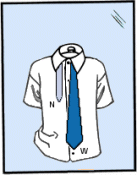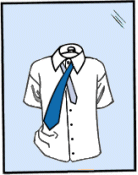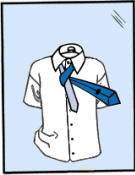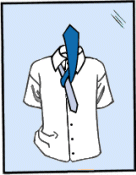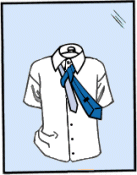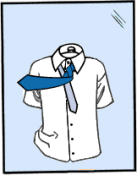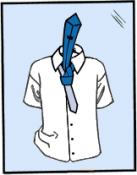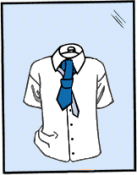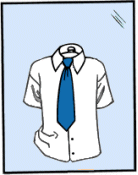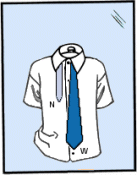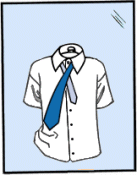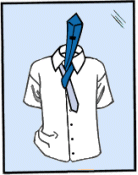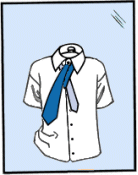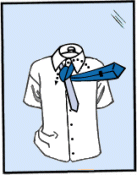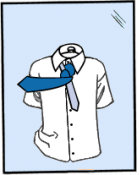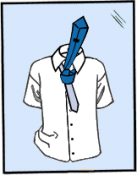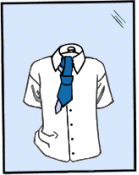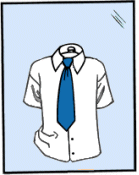Prom Tuxedos and Ties
|
|
History of the Tuxedo
Have you ever wondered about the story behind the tuxedo? Or how this special black and white ensemble, casually referred to as a "tux," or even "penguin suit," became men's expected attire for special occasions? There are several theories about the "invention" of the tuxedo, but popular belief credits a man with a name as fancy as his creation -- Pierre Lorillard IV.
Pierre Lorillard was a wealthy tobacco magnate of the 19th century. He and his family lived 40 miles northwest of New York City in a residential colony called Tuxedo Park, founded on land acquired from the Algonquin Indian tribe. The land was originally called P'tauk-seet-tough, named after the tribal chief and meaning "home of the bear." The town's founders kept the phonetics of the name and christened the area Tuxedo Park.
The Lorillards circulated among the highest social circles and Pierre Lorillard helped establish Tuxedo Park as an elite hunting and fishing destination. A large, Italian labor force comprised of skilled artisans was used to construct a series of elegant homes within the walled area that remain part of a designated historical area. Tuxedo Park thus became a high profile residence and resort for the worlds' rich and famous. And, as would be expected, an extravagant social scene soon followed. Tuxedo Park's residents and regular guests even established their own social organization called the Tuxedo Club.
The Tuxedo Club's first annual Autumn Ball was held in October of 1886. At the time, men's formal dress consisted of long tailcoat and white tie. However, the assumedly dashing Pierre Lorillard commissioned a modified "tailless" black jacket to wear to the ball. Some say Lorillard was inspired by a dinner jacket designed by Savile Row tailor Henry Poole & Co., tailor to England's Prince of Wales who later became King Edward VII. Others claim he simply had the custom-made jacket styled according to the shorter shape of the red jackets then worn for formal foxhunts. No matter the source of inspiration for the new formal attire, it was a small, but radical departure from the traditional long tailcoat.
Despite his intent, Pierre Lorillard did not go through with his fashion plans for the ball. However, his perhaps more rebellious son Griswold Lorillard, along with several of his friends, did wear the short jacket to the ball. Due to the lofty social status of the young men, the short jacket was instantly admired as a striking fashion statement rather than condemned as a fashion faux pas. Pierre Lorillard's short jacket, donned by his son Griswold, was quickly copied and when gentlemen wearing tuxedos were admitted to the Dress Circle of New York's Metropolitan Opera in 1889, the success of this new fashion was confirmed. The "tuxedo," so dubbed after the town of its debut, thus went from fashionable trend to timeless classic.
The tuxedo is a standard in American formal attire and is a ubiquitous symbol of celebration and special occasion for men of any and all levels of society. It is the quintessential men's attire for formal affairs and an obvious choice for all but the most formal of weddings, galas, balls, formals, and high school proms. Pierre Lorillard's fashion deviation has become the enduring standard for men's formal attire. Nothing says tradition and elegance like the tuxedo.
How to Tie a Perfect Bow Tie
Tying a perfect bow tie does not have to be complicated and difficult. With these instructions and a little practice, you can graduate to a new level of elegance with your own hand-tied bow tie.
|
|
Step 1Start with the tie around your neck, with one end about one and a half inches longer than the other. Cross the long end over the short end and pull it through the center. Keep this snug against your neck. |
|
|
Step 2Form a single loop with the short end, centering it where the knot will be. Make sure the end of the loop is the widest part, to ensure your bow will have the proper shape. |
|
|
Step 3Bring the long end over the looped short end. Now you can begin to see how the bow will take shape. |
|
|
Step 4Form a loop with the long end, again making sure the end of the loop is the widest part. Push this loop through the knot behind the previous (front) loop. |
|
|
Step 5Tighten the knot by pulling on the loops and adjust the ends carefully. Remember, practice makes perfect! |
How to Tie a Tie - Half Windsor Knot
Half Windsor Knot Video
To tie the Half Windsor Knot, select a necktie of your choice and stand in front of a mirror. Then simply follow the steps below:
|
|
1) Start with the wide end ("W") of your necktie on the right, extending about 12 inches below the narrow end ("N") on the left. |
|
|
2) Then cross the wide end over the narrow end. |
|
|
3) Bring the wide end around and behind the narrow end. |
|
|
4) Then bring the wide end up. |
|
|
5) Pull the wide end through the loop and to the right. |
|
|
6) Bring the wide end around front, over the narrow end from right to left. |
|
|
7) Again, bring the wide end up and through the loop. |
|
|
8) Then, bring the wide end down through the knot in front. |
|
|
9) And -- using both hands -- tighten the knot carefully and draw it up to the collar. |
And there you are! Simply keep working on this necktie knot and be sure to practice a few times until you are really good at it.
How to Tie a Tie – The Windsor Knot
The Windsor Knot Video
To tie the Windsor Knot, select a necktie of your choice and stand in front of a mirror. Then simply follow the steps below:
|
|
1) Start with the wide end ("W") of your necktie on the right, extending about 12 inches below the narrow end ("N") on the left. |
|
|
2) Then cross the wide end over the narrow end. |
|
|
3) Bring the wide end up through the loop between the collar and your tie. |
|
|
4) Then bring the wide end back down. |
|
|
5) Pull the wide end underneath the narrow end and to the right, back through the loop and to the right again so that the wide end is inside out. |
|
|
6) Bring the wide end across the front from right to left. |
|
|
7) Then pull the wide end up through the loop again. |
|
|
8) Bring the wide end down through the knot in front. |
|
|
9) And -- using both hands -- tighten the knot carefully and draw it up to the collar. |
Congratulations, you did it! You see, it is not rocket science after all. Simply keep practicing the Windsor Knot a few more times until you can tie this necktie knot within less than two minutes.


















